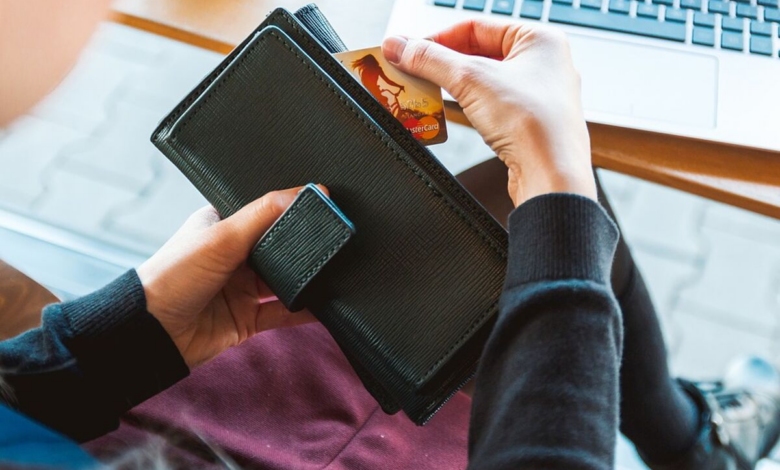
5 Ways to Save on Foreign Exchange Without Paying Massive Fees
5 Ways to Save on Foreign Exchange Without Paying Massive Fees: Have you ever been frustrated by the hefty fees associated with exchanging currencies? It’s a common problem, especially when traveling or making international payments. But what if I told you there are clever strategies to avoid those massive fees and save money?
In this post, we’ll explore five effective ways to minimize your foreign exchange costs and keep more of your hard-earned cash in your pocket.
From choosing the right exchange provider to timing your transfers strategically, we’ll dive into practical tips and tricks that can make a real difference in your wallet. Whether you’re a seasoned traveler or simply looking to send money overseas, this guide will equip you with the knowledge to navigate the world of foreign exchange with confidence and savings.
Choose the Right Exchange Provider
When sending money abroad, it’s crucial to choose the right exchange provider to minimize fees and get the best exchange rate. You have several options, each with its own strengths and weaknesses. Understanding these differences can save you significant amounts of money.
Types of Exchange Providers
The most common types of exchange providers are banks, money transfer services, and online currency exchange platforms. Each provider has its own set of advantages and disadvantages.
- Banksare typically the most convenient option for sending money abroad, as they are readily available and familiar to most people. However, banks often charge high fees and offer less competitive exchange rates than other providers.
- Money transfer services, like Western Union or MoneyGram, specialize in sending money internationally. They generally offer faster transfer speeds than banks and often have lower fees, but their exchange rates can be less favorable.
- Online currency exchange platformsare becoming increasingly popular as they offer competitive exchange rates and lower fees than traditional providers. However, they may require a longer transfer time and some platforms have stricter security requirements.
Comparison of Exchange Providers
Here’s a comparison table summarizing the key features of each provider type:
| Provider Type | Fees | Exchange Rates | Features |
|---|---|---|---|
| Banks | High | Less competitive | Convenience, wide network, established security |
| Money Transfer Services | Lower | Less competitive | Fast transfer speeds, wide network |
| Online Currency Exchange Platforms | Low | Competitive | Transparency, user-friendly interface, often offer better rates |
Pros and Cons of Each Provider Type
Banks
- Pros: Convenience, established security, wide network of branches, readily available customer support.
- Cons: High fees, less competitive exchange rates, slower transfer times compared to other providers.
Money Transfer Services
- Pros: Lower fees compared to banks, fast transfer speeds, wide network of locations for receiving money.
- Cons: Less competitive exchange rates, potential for higher fees depending on the transfer amount and destination, may have limited features.
Online Currency Exchange Platforms
- Pros: Competitive exchange rates, low fees, transparent pricing, user-friendly interface, often offer a wider range of features such as multi-currency accounts and mobile apps.
- Cons: Longer transfer times compared to money transfer services, potential security risks if not using a reputable platform, may not have the same level of customer support as traditional providers.
Utilize a Wise Account: 5 Ways To Save On Foreign Exchange Without Paying Massive Fees

Tired of exorbitant fees eating into your hard-earned money when sending money abroad? Wise, a global money transfer service, offers a solution that can significantly reduce these costs. By utilizing a Wise account, you can save on foreign exchange fees and make international payments with greater transparency and control.
Finding ways to save on foreign exchange is like discovering a hidden treasure chest, especially when you’re trying to avoid those hefty fees. It’s all about being smart with your money, just like the kind stranger who paid for a barista’s rent in this heartwarming story, you just saved a life kind stranger brings starbucks barista to tears in life changing interaction.
Sometimes, a little act of kindness can make a world of difference. And, just like that, you can find ways to save on foreign exchange by comparing rates, using a travel card, or even sending money through a money transfer service.
It’s all about exploring your options and finding what works best for you.
Wise Offers Competitive Exchange Rates
Wise stands out from traditional banks by using the mid-market exchange rate, also known as the interbank exchange rate. This rate represents the actual exchange rate used by banks and financial institutions when trading currencies. In contrast, banks typically apply a markup to the mid-market rate, resulting in hidden fees that can significantly impact your transfer.
Wise, however, applies a transparent fee that is usually much lower than the hidden markups applied by banks.
Saving money on foreign exchange can be a real headache, but there are some simple tricks to avoid those hefty fees. For example, using a debit card linked to your local bank account can often save you money, especially if you’re traveling within the EU.
If you’re looking to invest in your home’s energy efficiency, interested in solar panels here is some advice , and consider the long-term savings you’ll see on your energy bills. Back to those pesky exchange rates, researching the best time to exchange your currency can also help you avoid getting stung by unfavorable rates.
Setting Up a Wise Account and Making International Payments
Setting up a Wise account is straightforward and takes only a few minutes. Here’s a step-by-step guide:
- Visit the Wise website and create an account. You will need to provide basic personal information, such as your name, address, and email address.
- Verify your identity by providing a valid form of identification, such as a passport or driver’s license.
- Add funds to your Wise account using a bank transfer, debit card, or credit card.
- Select the currency you want to send and the currency you want to receive. Wise will display the mid-market exchange rate and the transparent fee for the transaction.
- Enter the recipient’s bank details and confirm the transfer.
Wise offers a variety of payment methods, including bank transfers, debit cards, and credit cards. You can also choose to receive funds directly into your Wise account, which can be used for future international payments or withdrawn to your local bank account.
Benefits of Using a Wise Account
Here are some of the key benefits of using a Wise account for international payments:
- Lower fees: Wise typically charges significantly lower fees than traditional banks, saving you money on every transaction.
- Transparent pricing: Wise clearly displays the mid-market exchange rate and the fee for each transaction, so you know exactly what you’re paying.
- Faster transfers: Wise transfers are typically faster than traditional bank transfers, especially for international payments.
- Multiple currencies: Wise supports over 50 currencies, allowing you to send and receive money globally.
- Secure and reliable: Wise is a regulated financial institution with robust security measures in place to protect your money.
Time Your Transfers Strategically

The exchange rate, which determines how much of one currency you get for another, is constantly fluctuating. These fluctuations can significantly impact the amount of money you receive after a foreign exchange transaction. Understanding these fluctuations and timing your transfers strategically can help you save money on foreign exchange fees.
Finding ways to save on foreign exchange can feel like a constant uphill battle, especially when dealing with those hefty fees. But don’t worry, there are definitely strategies out there that can help! One thing that’s definitely keeping me on edge right now is the supreme court is about to rule on another scary voting rights case.
It’s hard to focus on finances when such crucial issues are at stake, but I’m trying to stay positive. Anyway, back to those foreign exchange savings, did you know you can often get better rates by using a currency exchange specialist?
There are plenty of options out there, so it’s definitely worth doing some research!
Currency Fluctuations and Exchange Rates
Currency exchange rates are influenced by a variety of factors, including:
- Economic Performance:A country’s economic strength, reflected in factors like GDP growth, inflation, and interest rates, can influence its currency value. A strong economy often leads to a stronger currency.
- Political Stability:Political instability, such as wars or political turmoil, can negatively impact a country’s currency value. Investors may be less confident in a country’s economic future during such times.
- Interest Rates:Higher interest rates in a country can attract foreign investment, increasing demand for its currency and potentially strengthening it.
- Supply and Demand:Like any market, the supply and demand for a currency play a significant role in determining its value. Increased demand for a currency will drive its value up, while increased supply will drive it down.
- Government Policies:Government policies, such as currency interventions or trade agreements, can also impact exchange rates.
These factors constantly interact, leading to fluctuations in exchange rates. For example, if a country experiences strong economic growth, its currency might appreciate against other currencies. Conversely, if a country faces political instability, its currency might depreciate.
Identifying Favorable Exchange Rate Periods, 5 ways to save on foreign exchange without paying massive fees
Understanding the factors that influence exchange rates can help you identify periods when the exchange rate is favorable for your needs. Here are some tips:
- Track Exchange Rate Trends:Regularly monitor exchange rate movements using a currency converter or financial news websites. Look for trends and patterns in the exchange rate over time. For example, if you notice a currency has been steadily appreciating against your home currency, it might be a good time to exchange it.
- Consider Economic News:Stay informed about economic news and events that could affect exchange rates. For instance, if a country announces a new economic policy that is expected to boost its economy, its currency might strengthen.
- Use a Currency Converter:Currency converters are valuable tools for tracking exchange rate trends. They allow you to compare exchange rates from different providers and set alerts to notify you when the rate reaches a desired level.
While predicting exchange rate movements is not always possible, being aware of these factors and monitoring trends can help you make more informed decisions about when to exchange your currency.
Consider Alternative Payment Methods
Stepping away from traditional bank transfers and exploring alternative payment methods can significantly reduce foreign exchange fees. These options offer flexibility, convenience, and potentially lower costs, making them ideal for savvy travelers and frequent international spenders.
Prepaid Travel Cards
Prepaid travel cards are designed specifically for international use, offering a convenient and cost-effective way to manage your foreign exchange. Prepaid travel cards load funds in your home currency, which are then automatically converted to the local currency of your destination at a pre-determined exchange rate.
This eliminates the need for multiple currency conversions, saving you money on exchange fees. Additionally, many prepaid travel cards offer competitive exchange rates, often surpassing those provided by traditional banks.Here are some key advantages of using a prepaid travel card:
- Pre-determined Exchange Rates:Prepaid travel cards lock in an exchange rate when you load your card, eliminating the risk of fluctuations and ensuring you get a predictable rate. This can be particularly advantageous if the exchange rate is favorable at the time of loading.
- Lower Fees:Prepaid travel cards typically charge lower fees compared to traditional bank cards or currency exchange services. While some cards might have a small initial loading fee, they usually waive ATM withdrawal fees and transaction fees in foreign countries.
- Security:Prepaid travel cards offer greater security than traditional credit cards, as you only load a specific amount of money onto the card, limiting potential losses in case of theft or loss.
- Convenience:Prepaid travel cards are convenient for everyday purchases, ATM withdrawals, and online transactions in foreign countries.
Avoiding ATM Fees
Withdrawing cash from local ATMs is often a convenient way to access local currency, but it’s crucial to be mindful of the fees involved. Banks typically charge a hefty fee for international ATM withdrawals, which can quickly eat into your travel budget.
However, you can avoid these fees by using the following strategies:
- Choose the Right ATM Network:Many banks partner with specific ATM networks that offer fee-free withdrawals for their cardholders. Look for ATMs that display the logo of your bank’s network to avoid international ATM fees.
- Use ATMs Inside Banks:ATMs located inside banks are less likely to charge additional fees. This is because they are often owned and operated by the bank itself, reducing the chances of third-party charges.
- Contact Your Bank Before Traveling:Before traveling, inform your bank about your trip and the countries you’ll be visiting. They can provide you with information about ATM networks they are affiliated with, helping you avoid unexpected fees.
Peer-to-Peer (P2P) Money Transfer Platforms
Peer-to-peer (P2P) money transfer platforms, like Wise (formerly TransferWise) and Remitly, are becoming increasingly popular for sending money internationally. These platforms connect individuals directly, facilitating faster and cheaper transfers compared to traditional bank transfers.
- Transparency:P2P platforms are known for their transparent pricing models, clearly outlining all fees associated with transfers. This allows you to compare rates and choose the most cost-effective option.
- Competitive Exchange Rates:P2P platforms often offer more competitive exchange rates than traditional banks, as they leverage their technology to provide better rates.
- Faster Transfers:Transfers through P2P platforms are generally faster than traditional bank transfers, especially for smaller amounts.
Avoid Unnecessary Fees
While the previous tips focus on finding the best exchange rates and providers, it’s crucial to understand the various fees associated with foreign exchange transactions. These fees can significantly impact your overall savings, so it’s vital to identify and avoid them wherever possible.
Types of Fees
Foreign exchange transactions often come with several fees, including:
- Transaction fees:These are flat fees charged for each transaction, regardless of the amount exchanged. They can vary depending on the provider and transaction type.
- Percentage fees:Some providers charge a percentage of the transaction amount as a fee. This percentage can vary depending on the currency pair and transaction size.
- Inactivity fees:Some providers charge inactivity fees if you don’t use your account for a certain period. These fees are typically small but can add up over time.
- Currency conversion fees:If you use a debit or credit card abroad, you may be charged a currency conversion fee by your bank or card issuer.
- Hidden fees:Some providers may have hidden fees, such as markup fees or spread fees, which can be difficult to identify.
Avoiding Hidden Fees
Hidden fees can be a major source of frustration and financial loss. Here are some tips for avoiding them:
- Read the fine print:Before signing up for a foreign exchange service, carefully review the terms and conditions to identify any hidden fees.
- Compare providers:Different providers have different fee structures. Comparing fees from multiple providers can help you find the best option.
- Look for transparent pricing:Choose providers that are transparent about their fees and don’t have hidden charges.
- Ask questions:If you’re unsure about any fees, don’t hesitate to contact the provider and ask for clarification.
Minimizing Transaction Fees
Transaction fees can be minimized by planning ahead and making larger transfers:
- Plan your transfers in advance:Avoid last-minute transfers, as they often come with higher fees. Planning your transfers in advance gives you time to compare providers and find the best rates.
- Make larger transfers:Many providers offer lower fees for larger transactions. If possible, combine your transfers into one larger transaction to reduce the overall cost.
Final Conclusion
Navigating the world of foreign exchange doesn’t have to be a daunting task. By understanding the different options available and employing these savvy strategies, you can save money and enjoy a smoother experience. Remember, it’s all about taking control of your finances and making informed decisions to protect your hard-earned money.
So, embrace these five tips and watch your savings grow as you explore the world or manage your international transactions with confidence.





